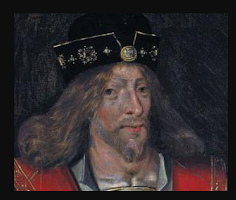Most of my recent direct ancestors and their families are noticeably working class. This is true for both my paternal and maternal sides. There are miners, blacksmiths, labourers, iron workers, carters, weavers....
My 2 x great grandfather John Young (1801-1879) had various occupations throughout his working life - labourer, fireman, timekeeper in an engineering works. He married his wife Janet Baillie, a pin winder, in the 1820s. Janet's father James was a labourer, surfacing roads. Pretty standard working people.
However, go three generations further back and we find my 5 x great grandfather James Baillie marrying an Elizabeth Bradfute, the daughter of a local minister and this is where it gets interesting. Elizabeth's mother, Jean Mure, was the daughter of a certain Scottish born James Mure of Rhoddans (County Down in Ireland), part of the landed gentry, his own father being William Mure of Glanderstoun. We are no longer in working class territory. I call women like Elizabeth 'gateway' ancestors - daughters of landed gentry were very often married off to ministers while their brothers inherited their father's land.
Once you come across someone like James Mure of Rhoddans, you can usually get a lot of information from written sources and family pedigrees. So I followed his line and that's when I got a real SURPRISE!
James Mure of Rhoddans was a descendant not only of nobility but royalty! His 3 x great grandfather Sir John Mure of Caldwell married Janet Stuart, the daughter of Matthew Stuart, 11th Earl of Lennox and 2nd Lord Darnley. Matthew Stuart's wife, Elizabeth Hamilton was the daughter of James Hamilton, 6th Earl of Cadzow, 1st Lord Hamilton and Princess Mary Stuart. And Mary's father??? King James II of Scotland - my 15 x great grandfather!
Now, because of the intermarrying of nobility and royalty, there are so many more famous family lines hiding in my tree and some very unscrupulous people. The historian in my family, my daughter Katie, is always helpful in giving me the historical background that I lack. The internet is extremely useful too - while reading about King James II, I came across this:
"In 1440 the two main factions fighting for control of the boy king turned to slaughter. William Crichton and Alexander Livingston arranged a meeting with their rivals, the powerful Douglases, at Edinburgh Castle. With the young king present, Crichton and Livingston murdered the 6th Earl of Douglas and his younger brother in a notorious evening that would become known as the Black Dinner."
Source: https://www.bbc.co.uk/scotland/history/articles/james_ii/


Comments
Post a Comment